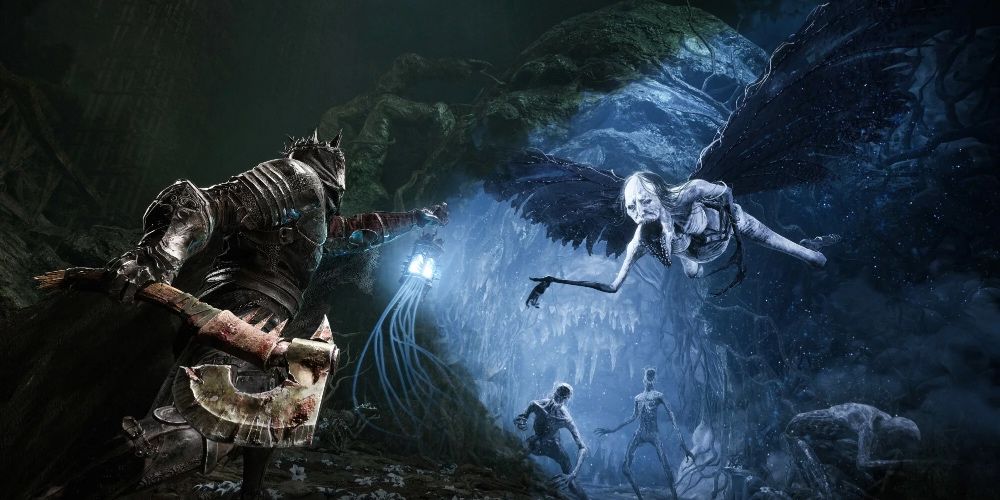
The Umbral Realm in Lords of the Fallen: Unleash Absolute Power with a High-Stakes Gamble

The Umbral Realm in Lords of the Fallen takes risk-reward gameplay to new heights, offering increased vigor but at a price Prepare to delve into an immersive world where every decision carries consequences
Highlights
The Soulslike genre gets an extra layer of depth and complexity in Lords of the Fallen with its distinctive dual-world mechanic. Players can now explore different realms, solving puzzles and traversing environments to enhance their gaming experience.
Balancing risk and reward is vital in the game, as the Umbral realm provides greater rewards for the duration spent there. However, it also comes with heightened difficulty and a constant countdown until powerful reaper enemies arrive.
The game emphasizes the lasting consequences of dying in the Umbral realm, as players permanently lose Vigor. This underscores the significance of strategic decision-making and the need to avoid a misguided sense of safety.
A week after its release, Lords of the Fallen continues to captivate fans of Soulslike games with its unique approach to exploration. One of the game's standout features, which sets it apart in the genre, is its use of a dual-world mechanic. Players are tasked with regularly transitioning between the physical realm of Axiom and the ethereal Umbral realm. This mechanic not only opens up new paths for puzzle-solving and environmental traversal, but also introduces one of the most compelling risk/reward systems in the genre.
Balancing risk and reward is essential in any Soulslike game, with players constantly evaluating the benefits of pushing themselves into dangerous situations. Defeating enemies grants valuable currency for leveling up, but dying means losing everything earned and only getting one chance to recover before it's gone forever. Similarly, players can rest at checkpoints to replenish their resources, but doing so comes at the cost of respawning all previously defeated enemies. Lords of the Fallen's Umbral realm takes this risk/reward dynamic to new heights by offering greater rewards for spending time in the realm, but at the cost of increased difficulty and a constantly ticking doomsday clock.
The Umbral Realm In Lords of the Fallen Offers More Vigor, At a Cost
Lords of the Fallen encourages players to frequently switch between Axiom and Umbral, as the two worlds have surprising connections. It is worth noting that enemies in Umbral drop more Vigor (the game's currency) and will continuously respawn the longer one stays in the spirit realm. Taking advantage of Umbral's efficiency for grinding is recommended, as it is possible to enter at any time and exits are often nearby.
However, there is a trade-off for this greater reward. Players will eventually face incredibly challenging enemies called reapers, who are nearly invincible in the early stages of the game. It is essential to constantly be aware of the countdown timer signaling their arrival. The longer one stays in Umbral, the better the reward, but there is also a higher risk of losing everything if they die in Umbral, as death is permanent.
Although the reaper enemies in Lords of the Fallen can be killed, the player's vulnerability in the Umbral realm makes prolonged stays there tempting yet perilous. Moreover, the game can deceive players into a false sense of safety since dying in Axiom leads them to the Umbral realm, giving the impression that death is temporary and lost progress can be regained. Unfortunately, losing Vigor in Umbral results in permanent loss, potentially eradicating significant advancements.
The constant presence of danger and the willingness to risk security in exchange for substantial rewards are integral to the Soulslike experience, and Lords of the Fallen distinguishes itself by effectively incorporating the traditional risk/reward gameplay found in the genre. The Umbral realm introduces captivating variations to the traditional Soulslike experience by influencing healing, leveling, and traversal mechanics in Lords of the Fallen's gameplay. While Lords of the Fallen may be the first game in the Soulslike genre to successfully implement dual worlds, it is likely that others will follow suit.
Lords of the Fallen is available now for PC, PS5, and Xbox Series X/S.














